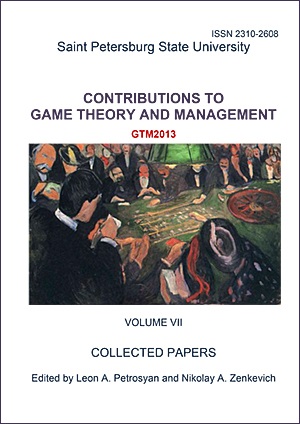How to arrange a Singles' Party: Coalition Formation in Matching Game
Abstract
The study addresses important issues relating to computational aspects of coalition formation. However, finding payoffs−imputations belonging to the core−is, while almost as well known, an overly complex, NP-hard problem, even for modern supercomputers. The issue becomes uncertain because, among other issues, it is unknown whether the core is non-empty. In the proposed cooperative game, under the name of singles, the presence of non-empty collections of outcomes (payoffs) similar to the core (say quasi-core) is fully guaranteed. Quasi-core is defined as a collection of coalitions minimal by inclusion among non-dominant coalitions induced through payoffs similar to super-modular characteristic functions (Shapley, 1971). As claimed, the quasi-core is identified via a version of P-NP problem that utilizes the branch and bound heuristic and the results are visualized by Excel spreadsheet.
Keywords:
stability, game theory, coalition formation
Downloads
References
Downloads
Published
How to Cite
Issue
Section
License
Articles of "Contributions to Game Theory and Management" are open access distributed under the terms of the License Agreement with Saint Petersburg State University, which permits to the authors unrestricted distribution and self-archiving free of charge.




